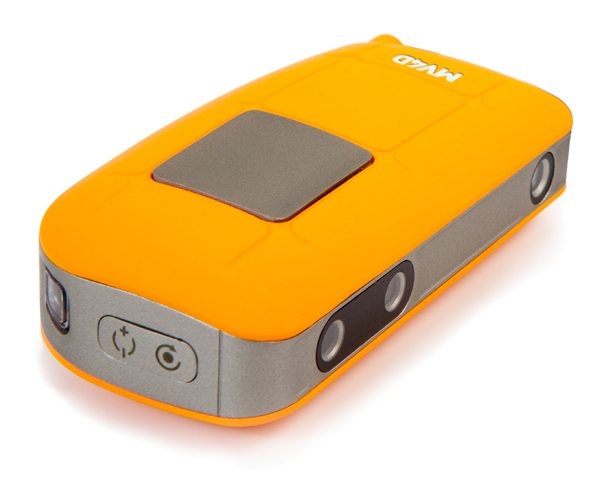Mantis Vision has announced the impending arrival of a new handheld scanner for the short range scanning market. The Pocketscan3D is a pocket-camera sized device that records video through a depth sensor and a color sensor while projecting a structured light pattern (infrared). While this is certainly not the first device on the market to use active triangulation, it is packaged in one of the most consumer friendly ways that I’ve seen thus far. However, the camera must be attached to a Windows OS based tablet, laptop, or workstation via USB3 for viewing, data processing, and storage. So, calling it a pocket scanner is a bit disingenuous when you have to attach it to something that will not actually fit in your pocket.
The listed specifications are impressive given the prices I’ve heard as suggestions for retail sales—but more on that in a minute. Accuracy is listed as 1mm at 0.5m range and 2mm at 1m range with a working range of 0.25-1m. Point density is unlimited in registered scenes but single frames are listed at 60,000 points per frame. The frame rate is listed as 10-30fps. The size of the PocketScan 3D is arguably the featured asset at 120mm x 60mm x 30mm (4.7in x 2.3in x 1.1in) and a weight of 0.25kg (8.8 ounces).
As for the pricing, I can’t seem to get a firm retail price nailed down. I’ve heard “under $10,000 USD,” “in line with a production laptop,” “affordable,” and so on. I am anxious to see what the final price will be, mostly because it will tell me more about their intended target audience than I can glean from the spec sheet.
The lack of clarity on the intended audience is a result of the current market offerings. Mantis already has a hand scanner on the market (the F5) which is listed as a professional grade scanner. While the F5 is technically twice as accurate as the PocketScan 3D, we’re only talking about 0.5mm of difference. Then you have the Mantis Aquila which is the MV4D core (same scanning technology) built into a tablet. Lest you think that is all, don’t forget about Project Tango which uses the same MV4D tech on a mobile phone and/or a 7 in Android tablet. Add to that 3rd party developers that use Mantis Vision sensors with their own software and the segment looks pretty crowded.* While it’s possible that the differentiator will be the format (tablet/phone/pocket camera/etc.) with the specifications being so similar I’m assuming that price will be used to stratify market presence for each product. As of today, I don’t know how to rank these various products according to capabilities, price or target market.
However, the verbiage put out by Mantis Vision is clear. They use the word “professional” a lot, but they also use “hobbyist,” “creators,” “developers,” etc. With that type of description, I think it’s safe to assume that Mantis Vision wants to have the first scanners for sale on Amazon, at Best Buy or in Home Depot. Whether that is the PocketScan3D remains to be seen but with shipments starting before the end of 2014 we shouldn’t have to wait too long to find out.
* Editor’s note: Originally, the post mistakenly reported that DotProduct used a Mantis Vision sensor. This is not the case.






